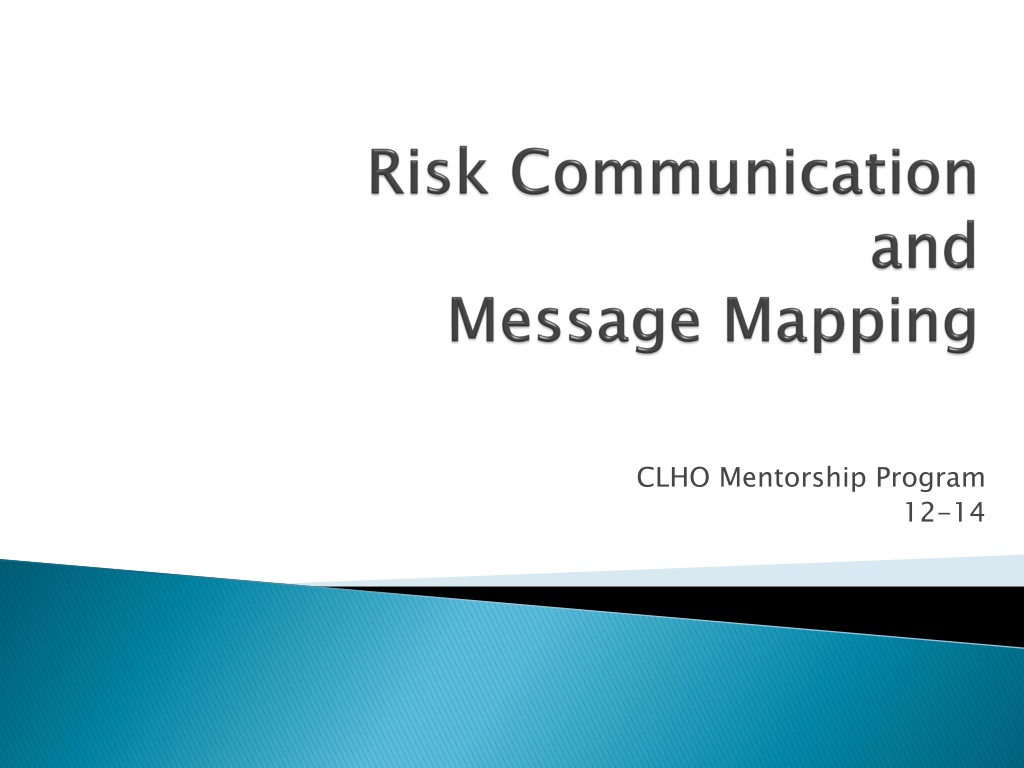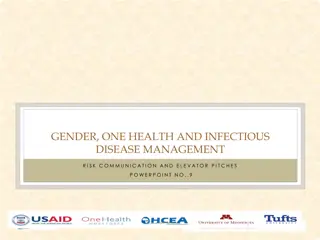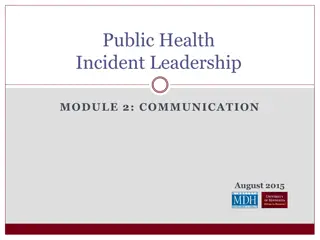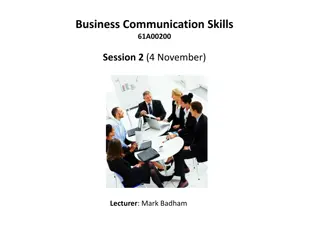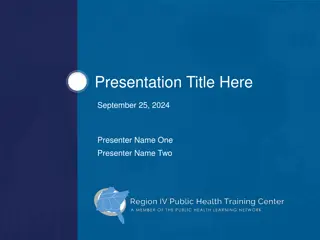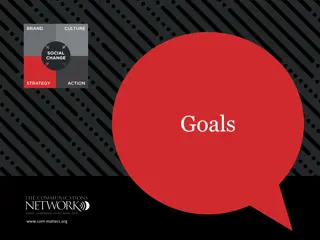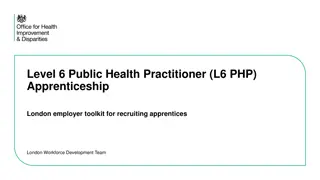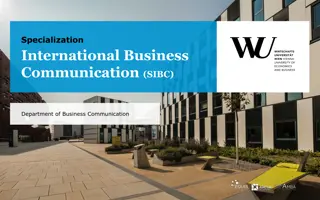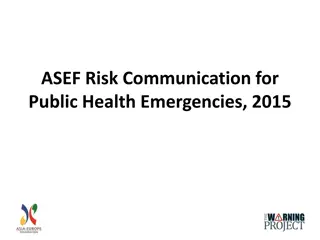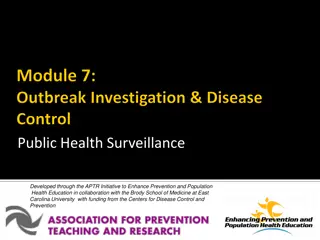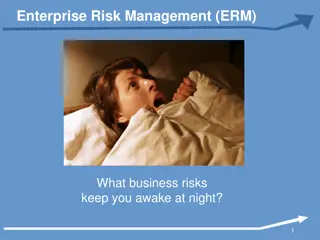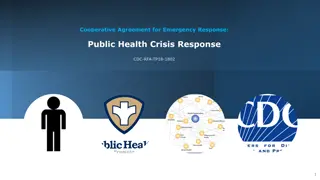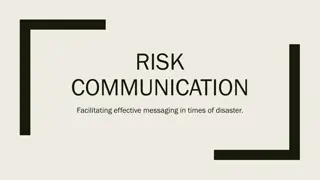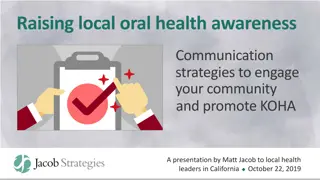Effective Communication Strategies for Managing Public Health Risks
Utilizing a science-based approach, this program emphasizes accurate information delivery, acknowledgment of uncertainties, and fostering public support. Actions focus on respecting perceptions and aiding informed decisions to address health concerns and promote safety effectively.
Download Presentation

Please find below an Image/Link to download the presentation.
The content on the website is provided AS IS for your information and personal use only. It may not be sold, licensed, or shared on other websites without obtaining consent from the author. Download presentation by click this link. If you encounter any issues during the download, it is possible that the publisher has removed the file from their server.
E N D
Presentation Transcript
CLHO Mentorship Program 12-14
Vince Covello Center for Risk Communication http://centerforriskcommunication.org/ Peter Sandman www.psandman.com/
High Level Level of of Outrage Outrage Low Low High Level of Hazard Level of Hazard
High Stinky MGP Level Level Superfund Wind Farms Meth Labs DuPont Wells of of Outrage Outrage Fountain Legionella H1N1 MGP MGP Cleanup Crawford Creek DuPont Property Low Low High Level of Hazard Level of Hazard
High Outrage Management Risk/Crisis Communication Level Level of of Outrage Outrage Precaution Advocacy Public Relations Low Low High Level of Hazard Level of Hazard
Science-based approach for communicating effectively in situations with: High Concern High Stress Emotionally Charged Controversial
Accurate and clear information for understanding potential health risks. Addresses and avoids undue health concerns. Acknowledges areas of uncertainty. Reassures public of intentions. Fosters public support for actions.
Will result in providing the public with Knowledge and Understanding Trust and Credibility Informed Decisions, Attitudes, Beliefs, and Behaviors.
Actions, words, and other interactions that incorporate and respect the perceptions of the information recipients, and are intended to help people make more informed decisions about threats to their health and safety.
1. Ignore the Public 2. Improve explaining risk data 3. Dialogue with the community especially interested and concerned, even fanatic, stakeholders 4. Treat the Public as a full partner requires fundamental shifts in an organization s values and culture
Is not only a matter of what an organization says, but what it does. Must account for the affective (emotion) component in people s perceptions of risk. dual process of facts and feelings. shift from presenting facts & data to addressing perceptions Will be more effective when conducted as dialogue, not an instruction.
Lower Perceived Risk Trustworthy sources Substantial benefits Voluntary Controllable Fair/equitable Natural origin Familiar Not dreaded Certain Children not victims High Perceived Risk Untrustworthy sources Few benefits Involuntary Uncontrollable Unfair/inequitable Human origin/manmade Unfamiliar/exotic Dreaded Uncertain Children as victims
The key for successful Risk Communication is a sound and logical message structure developed with APP Anticipation Preparation Practice APP:
1. Identify stake holders early in the communication process 2. Anticipate questions and concerns, before they are raised 95% of questions can be predicted in advance. 3. Organize our thinking and develop prepared messages in response to anticipated questions and concerns. 4. Develop key messages and supporting information within a clear & concise framework.
5. Develop supporting facts & proofs 6. Conduct systematic message testing Preferred, but not always possible 7. Plan for delivery of messages Provide user-friendly guidance to spokesperson. Ensure a central repository of consistent messages. Promote the agency speaking with one voice. Establish open dialogue about the messages, both within and outside the agency.
Message Mapping Team Stakeholders and their Concerns Key Messages and Supporting Facts Review Message Preparation Message Use
Message Teams Subject Matter Experts Communication specialists or point-person Policy/management/legal guidance Reviewers Knowledgeable
Who is: Affected? Interested? Influential? Determining Stakeholder s concerns
Addresses What should people know about the issue/event? What they should know regardless of the questions asked? What you would put into the opening statement Be sure these get delivered Serves as a harbor in a storm in case the delivery becomes tense or stressful
Whats it all about? What happened? What caused it to happen? What does it mean? What do you want from stake holders? What s in it for stake holders?
3/9/27 3 messages spoken in 9 seconds 27 words (9/9/9 or 12/6/9) Order of importance: 1/3/2 Primacy/Rescency Each message should be able to stand alone Avoid absolutes and unnecessary negatives
CCO Compassion, Conviction, Optimism Shift competence to caring Listening, caring, & empathy assessed by stake holders in first 30 seconds. Rule of 3 3 messages Each message repeated 3 times Each message supported by 3 supporting messages
In high stress situations, 1 negative message = 3 positive messages When stating 1 negative, follow-up with 3 positives
How do you respond if you dont have an answer? I Don t Know template Repeat the question Say you don t know, or can t answer the question, but wish you could Give reasons why you don t know or can t answer the question Indicate a follow-up with a deadline Bridge back to what you can say, core messages
The most important thing for people to know is . What this all boils down to is What needs to be emphasized is
Presentation: 10 to 15 minutes Responses to questions: 1 to 2 minutes Sound bites 27 words, 9 seconds, 3 messages
HOs have strong community partnerships. HOs have clear public health roles and responsibilities in their communities HOs have acquired effective risk communication skills.
Vapor Intrusion at Monona High School (May 9, 2012) Testing inside the school found solvents above acceptable levels. Breathing these levels is not harmful, but exposures should be stopped. Mitigation will halt solvents from entering the school.
Arsenic in Keyes Lake Wells (July 16, 2012) Testing found arsenic a health concern in 27% of wells. Agencies are helping residents obtain safe drinking water. All Keyes Lake wells should be tested for arsenic.
Risk Communication is a science-based discipline High stress situations changes communication rules. The key to success is Anticipation, Preparation, and Practice.
Considering the NWS current heat advisories for Monday and Tuesday, develop a message map of the key health messages you think should be provided to the public. What about multiple-day heat warnings? pavement buckling? people medications (psychotropic)?
A reporter with the local TV station will be arriving in 10 minutes to interview you about the death of a 87 year-old woman who was discovered this afternoon alone in her apartment. How would you prepare?
State Public Health Risk Communications Training CDC Risk Communication http://www.bt.cdc.gov/CERC/
